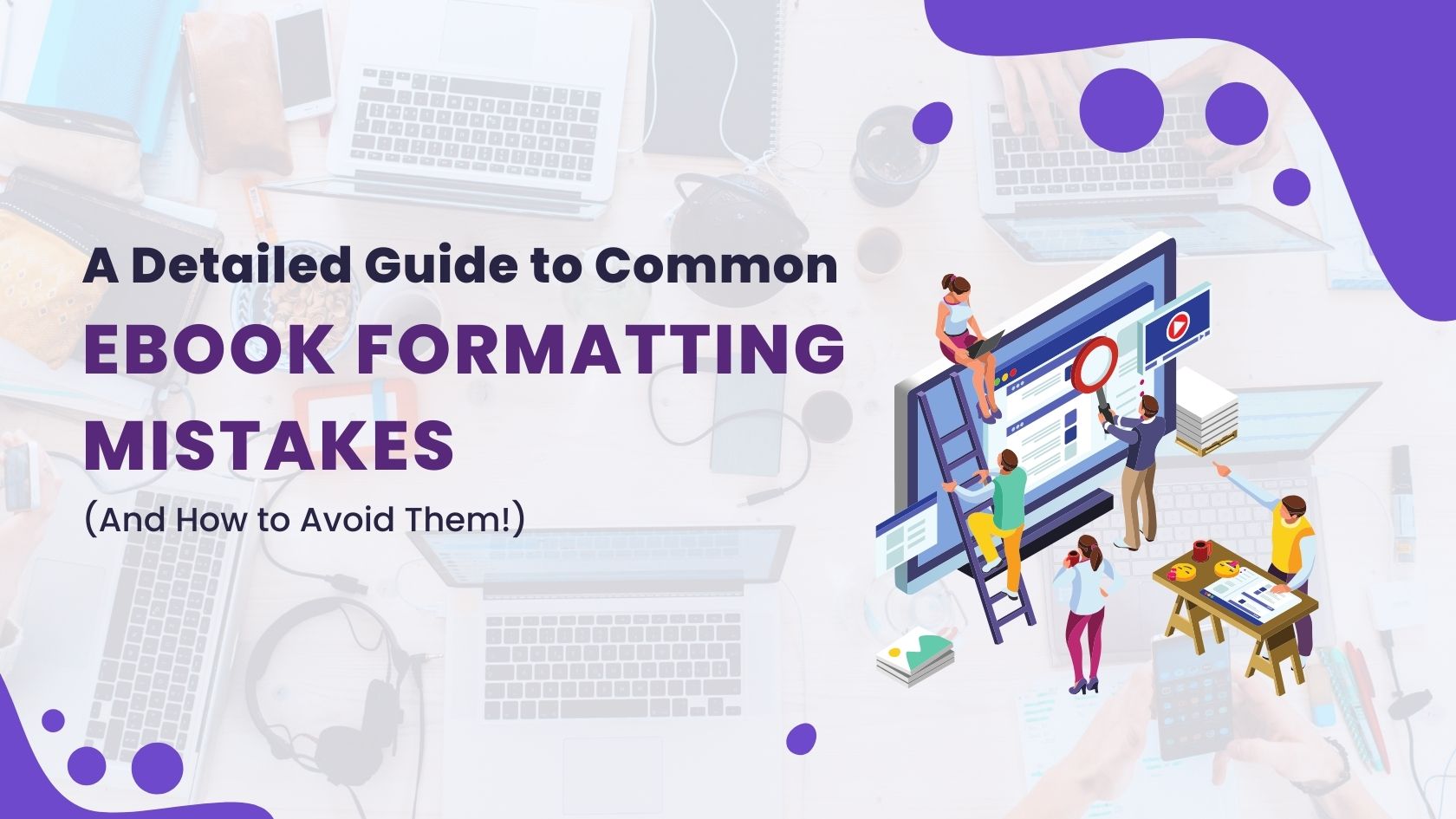In the uber-dynamic digital world, where every other aspect is being digitized, eBooks have completely changed the way content was being created, consumed, and distributed. eBooks and their associated services such as eBook formatting services and eBook conversion have opened new doors for budding authors to reach massive audiences without spending too much, a feat that was almost impossible with their physical counterparts. Moreover, this digital shift has made eBooks and other such collaterals an essential element of different business strategies across almost all industry verticals. From sales and marketing to training and education, eBooks offer an effective and highly versatile means to share information, establish authority, and engage with the desired audience. However, it is easier said than done! The path toward a successful eBook has many potential pitfalls. From marketing mishaps that leave a promising manuscript in the middle to formatting issues that hamper readability, the journey from a mere manuscript to industry’s bestseller is a long, challenging one.

Whether you are a business house testing the world of eBooks or a seasoned author, understanding the common mistakes in creating an eBook is imperative for crafting highly engaging, professional, and compelling digital collaterals. Be it lack of the detailed structure and planning, poor content quality, inefficient design and formatting, or various technical errors, they can hinder the discoverability of your digital book, rendering efforts of even the most promising eBook conversion companies null and void. So, let’s unfold the nuances of eBook publishing process and associated challenges while shedding light on actionable insights as to how these challenges can be avoided, so that your next publication meets the right goals.
- Mediocre Cover with No Design Thinking: It’s highly likely you’ve heard that the mind forms opinion about a specific article within a millisecond and your eBook is no exception. If the cover page of your eBook is bland, uninspiring, and dull or doesn’t match the content, the chance of your targeted audience picking, buying, and reading your content greatly reduces. Similar to the content for which you spend hours just, the cover art requires in-depth design thinking. Moreover, it is the cover art that will be displayed on the web page and that too in the form of a little picture, so ensure that the title is clearly visible, with simple, clutter-free, and eye-catching design. Also, ensure to create a title that captures readers’ pain points, thus giving them an idea what your content is intended to solve.
- Content Repetition: You would always come across two types of readers: ones who would go through the section that would meet their needs or give them answers they require and the other ones who would read the entire material. Now if you publish your material frequently with the same design and similar content, they’ll find it frustrating to differentiate between them and most likely leave the content unread. Although it is recommended to follow the brand style and guidelines to a T, there should be enough space for creative liberty to ensure that each content piece of yours maintains its uniqueness. To mitigate this challenge while meeting the guidelines, you can play around with imagery, writing styles, and logo placement in the eBook.
- Endless Text with No Visuals: Nothing pushes visitors away from a page that has endless text with no visuals, graphics, or white space. Readers prefer pages when the material is divided into smaller, easy to consume sections, and if possible, concise concepts. It is always advised to safeguard yourself from content that your readers would mark as “TL:DR” (too long, didn’t read). Additionally, eBooks should have figures and facts corroborating concepts being explained in the content to establish the arguments. Rather, putting out data, using comparison diagrams, charts, scatter plots and other visual representations is always beneficial in putting forward points elaborated via the content.
- Image Resolution & Spacing: Image resolution and spacing is one of the biggest challenges as most of the eBook conversion services would shrink the included images to a set size. With Kindle, it is a different story as they charge based on delivery, so if the content has many images, it may impact the overall budget. Here the problem is HDD Kindle with high-definition screen makes the images look almost microscopic. There’s no permanent solution to this but you can keep the images 1200px wide. By using any image editor, you can save a lower resolution image with the suggested pixel width. If the image looks too big, white space can be used to fill the 1200px width and image should be placed at center.
- Improper Paragraph Formatting & Font Usage: Another key issue with eBook formatting is improper or inconsistency in paragraph formatting and selecting the wrong font or utilizing fonts inconsistently throughout the entire content. Huge text blocks without the required breaks, improper indentation, inconsistent line spacing, small font size, over decorating or fonts that are not appropriate for digital screen can impact the readability, hinder the narrative follow, and distract readers from the original content. To mitigate this challenge, it is advised to stick with consistency in paragraph spacing, simple fonts like Calibri, Time New Roman or Arial, accurate indentation and the right font size and style throughout the eBook.
- Incompatibility Across Various Devices & Inadequate Testing: A common yet significant mistake that authors usually commit is overlooking the testing phase for their eBooks for device and application compatibility. Different readers opt for formatting instructions in their own way; your eBook might look perfect on a Kindle but may appear haywire in an iOS app or a Nook. Important elements such as images, fonts, and layouts may face inconsistencies, resulting in run off text, distortion of special formatting, and misaligned images. Moreover, embedded media, hyperlinks, and any kind of interactive content may behave unusual across platforms, resulting in improper display of video, broken links, and non-functioning of interactive elements. Such issues directly impact the quality of your eBook and readability. To avoid such issues, our eBook experts advise thorough testing of eBooks on various applications and devices before publishing. This testing should include checking of the rendering of images, media, and text while ensuring all interactive aspects are working properly across all devices.
Understanding and avoiding these mistakes is vital to create eBooks which are not only captivating and professional but also achieve their intended goal. By focusing on cover design, making visuals an integral part of the content with the right resolution, avoiding repetition of content, maintaining consistency in fonts and paragraph, and testing your eBook thoroughly, you can enhance the impact and quality of your eBook. Whether you are a business planning to utilize eBooks as part of your marketing strategy or a self-publishing author, you can always team up with Top eBook formatting services providers to navigate the complexities of eBook creation.


